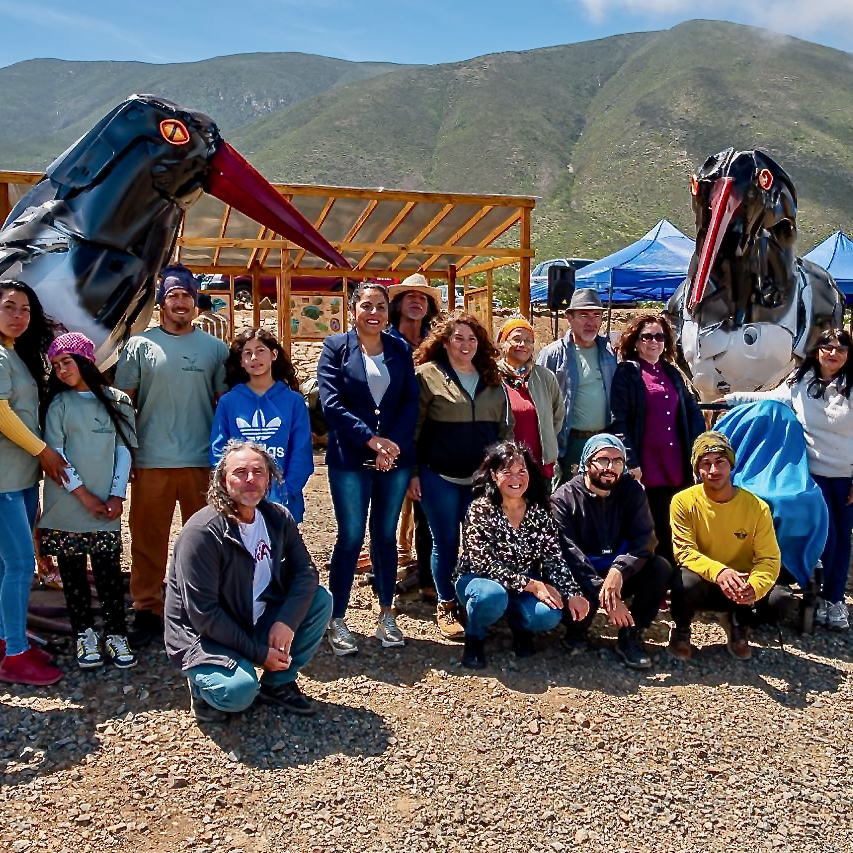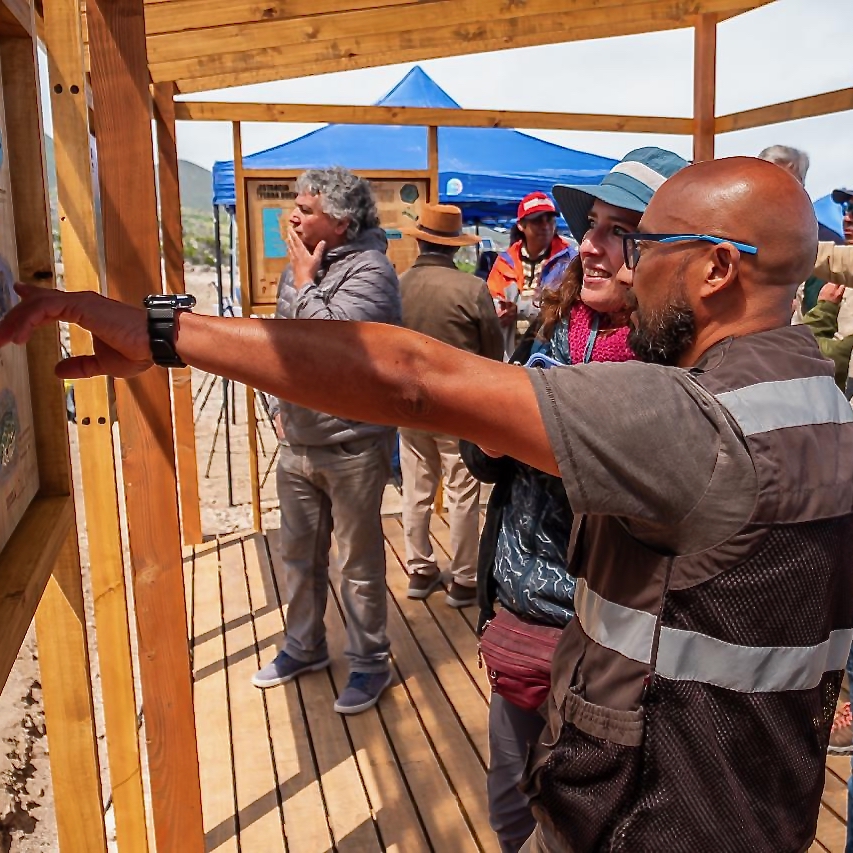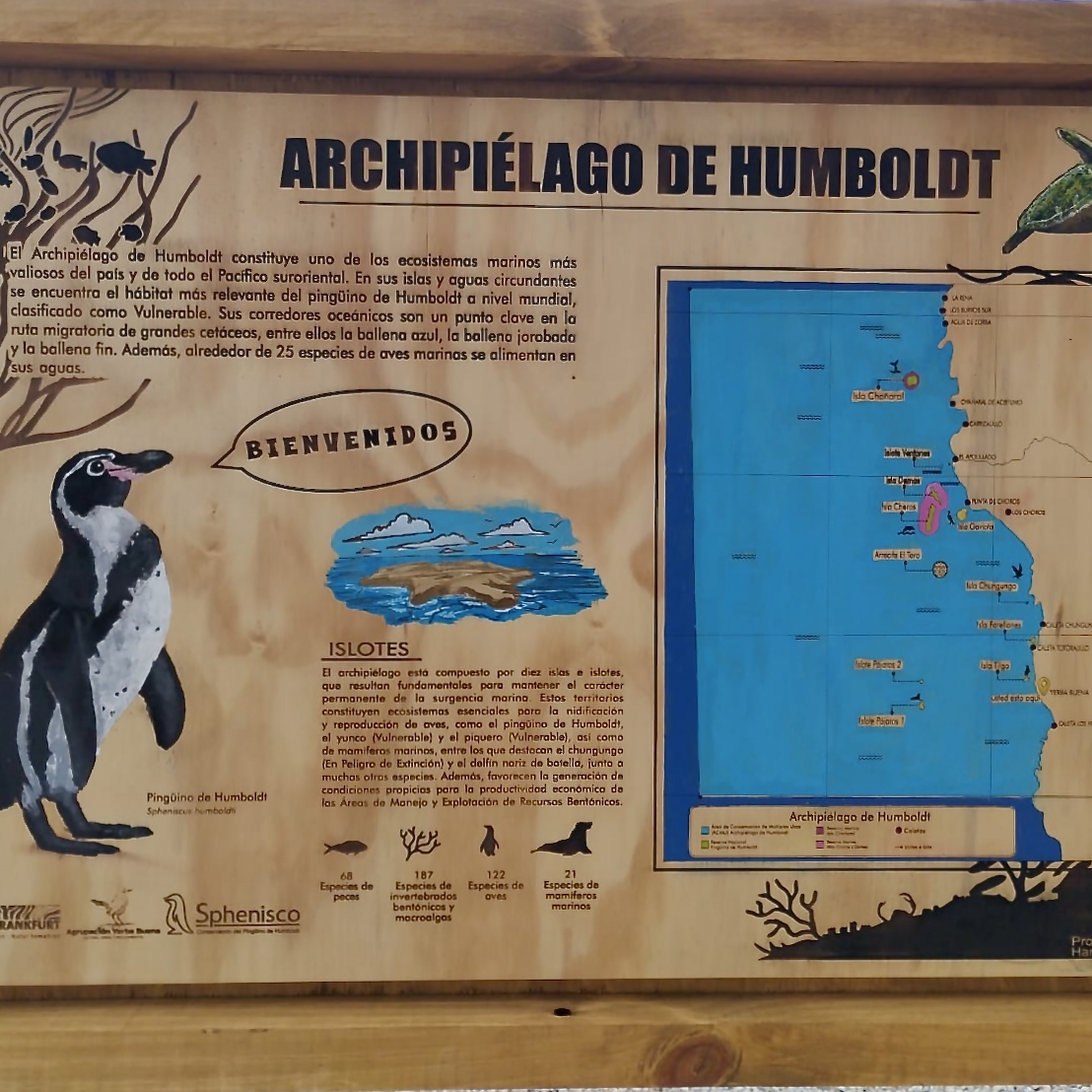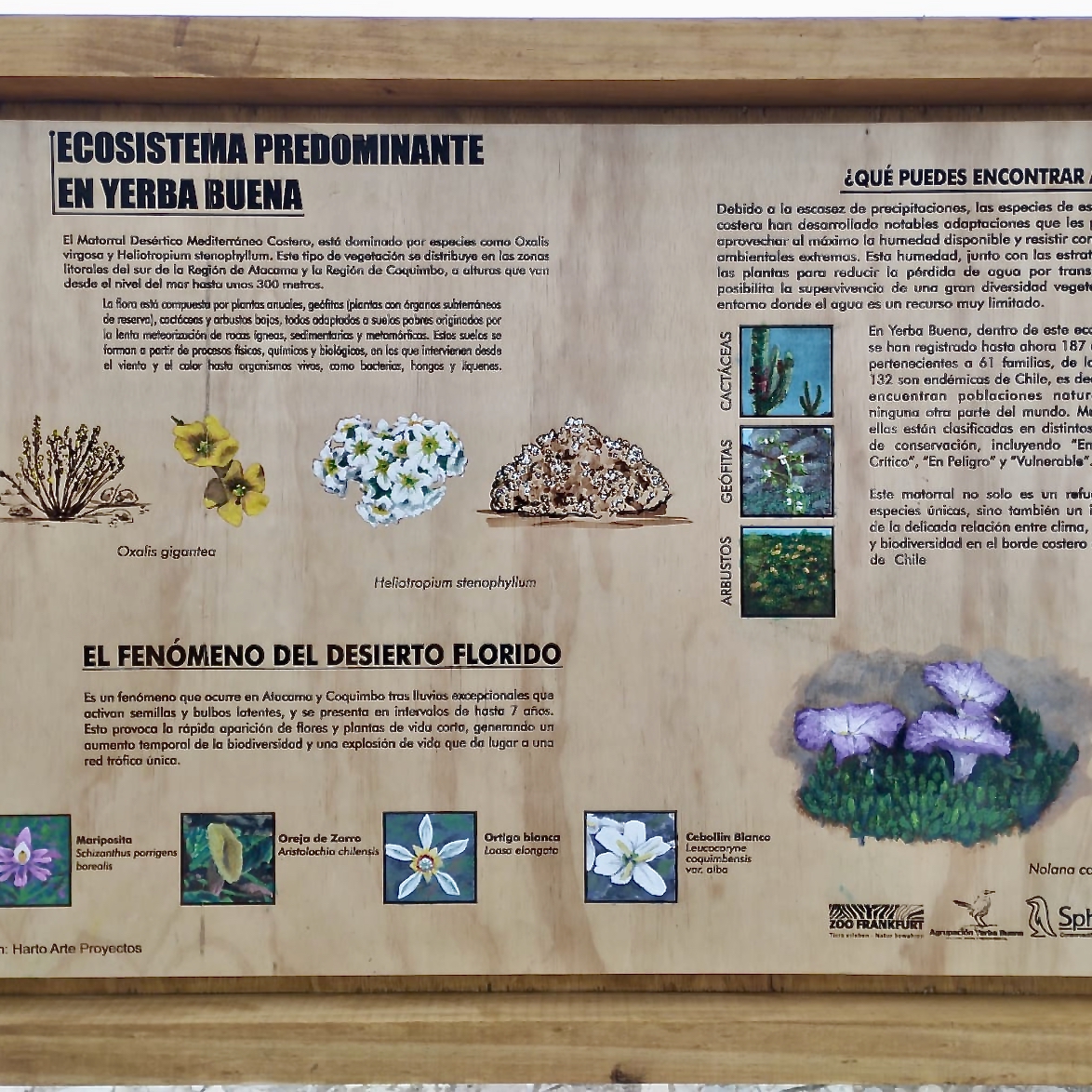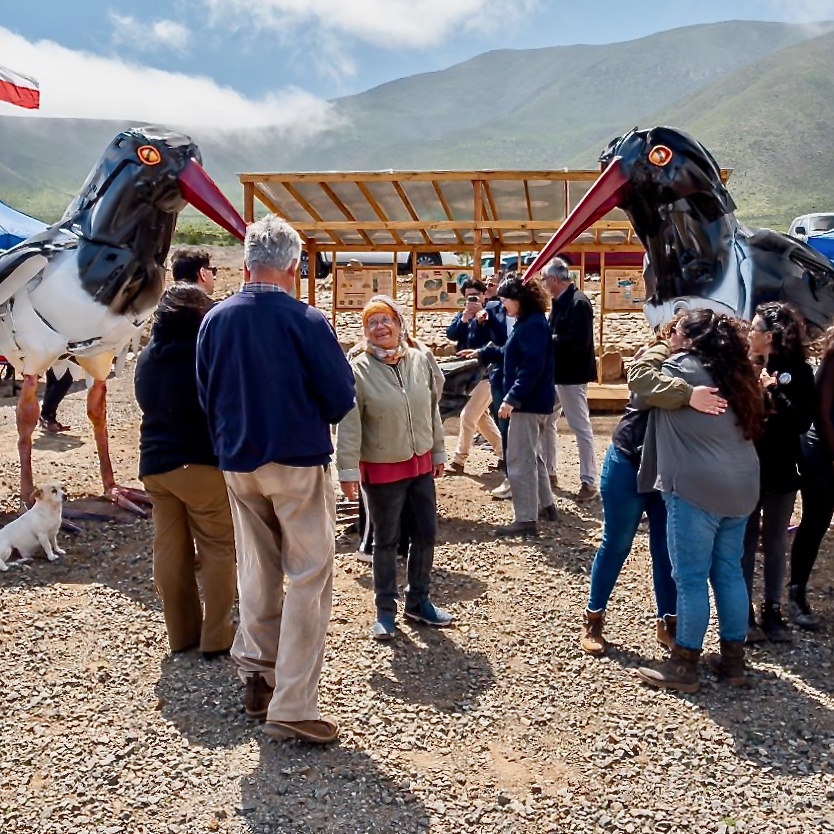Landau, October 11, 2025. On October 3, the Yerba Buena InfoPoint was opened (see “InfoPoint ... Opening on October 9”). With this information point, the Yerba Buena Group aims to contribute to environmental education and protect the Humboldt Archipelago with its coastal fauna and flora. The information center was established by the Osorio family and the Yerba Buena Group with the support of Sphenisco Chile, the Frankfurt Zoo, and the municipality of La Higuera. The 2.5-meter-tall Pilpilén sculptures (1) encourage visitors to stop and learn about the Humboldt Archipelago and the ecosystem in Yerba Buena. (2)
Information board “The Humboldt Archipelago”
The Humboldt Archipelago is one of the most valuable marine ecosystems in the country and the entire southeastern Pacific. Its islands and waters are home to the world's most important habitat for the endangered Humboldt penguin. The archipelago's marine corridors are an important part of the migration routes of large whales, including blue whales, humpback whales, and fin whales. In addition, around 25 species of seabirds feed in its waters.
Islands
The archipelago consists of ten islands and islets that are essential for maintaining permanent sea upwelling. The upwelling zones are important ecosystems for the breeding and reproduction of birds such as the Humboldt penguin, the (endangered) Yunco, and the (endangered) booby, as well as marine mammals, including the Chungungo (threatened with extinction), the round-headed dolphin, and many other species. In addition, the upwelling zones create favorable conditions for the economic productivity of the areas for the management and use of benthic resources. (3)
68 fish species
187 species of benthic invertebrates and macroalgae
122 bird species
21 marine mammals
Information board “Predominant ecosystem in Yerba Buena”
The Mediterranean coastal desert is dominated by species such as Oxalis virgosa (4) and Heliotropium stenophylium (5). This type of vegetation is common in the coastal areas in the south of the Atacama and Coquimbo regions at altitudes between sea level and around 300 meters above sea level.
The flora consists of annual plants, geophytes (plants with underground storage organs), cacti, and low shrubs, all of which are adapted to barren soils. Soils formed by the slow weathering of igneous, sedimentary, and metamorphic rocks. These soils are created by physical, chemical, and biological processes involving wind and temperatures as well as living organisms such as bacteria, fungi, and lichens.
The phenomenon of the blooming desert
This phenomenon occurs in the Atacama and Coquimbo regions after exceptional rainfall, which activates dormant seeds and tubers. It occurs at intervals of up to seven years and leads to the rapid flowering of short-lived flowers and plants. This temporarily increases biodiversity and causes a unique network of life to explode.
What is there to discover here?
Due to low rainfall, the species found along this coastal strip have developed remarkable adaptations that enable them to make optimal use of available moisture and withstand extreme environmental conditions. The (low) humidity and the ability of plants to reduce water loss through transpiration allow for a wide variety of plant life in an environment where water is a very limited resource.
To date, 187 species from 61 families have been recorded in Yerba Buena. Of these, 132 are endemic to Chile, meaning that there are no natural populations anywhere else in the world. Many of them are classified under various conservation statuses, including ‘critically endangered,’ “endangered” and ‘vulnerable.’
This scrubland is not only a refuge for unique species, but also an indicator of the delicate relationship between climate, geology and biodiversity on the coast of northern Chile.
W. K.
notes
For better readability, the generic masculine form is used in this article. Unless otherwise indicated, the terms used in this article refer to all genders.
(1) Pilpilén. Name for the brown-mantled oystercatcher (Haematopus palliatus), a species of the oystercatcher family. The species is native to North, Central and South America.
(2) Translation (with deepl) of the information boards ‘Archipiélago Humboldt’ and ‘Ecosistema predominante en Yerba Buena’ at the InfoPoint.
(3) Benthic resources. Resources found at the bottom of a body of water.
(4) Oxalis virgosa is a shrub-like succulent plant from the wood sorrel family.
(5) Heliotropium stenophyllum is a plant species from the forget-me-not family. The plant is endemic to Chile and occurs in the coastal areas of the semi-deserts in the Coquimbo and Atacama regions.
translated by Claudia Fawer



